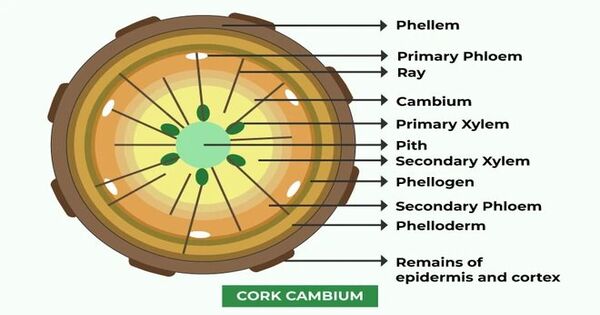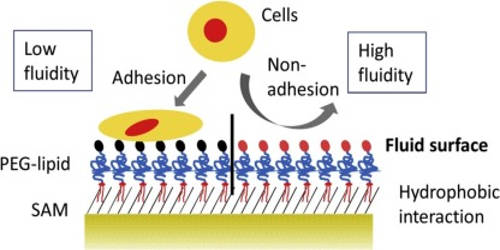Cork cambium is a tissue that is found in the epidermis of many vascular plants. It is a form of lateral meristem that occurs in the stems and roots of woody plants, notably dicots. It is one of the numerous layers of bark that lies between the cork and the major phloem. Its principal role is to develop cork cells (phellem) toward the outside and, in rare cases, phelloderm cells toward the inside of the plant.
The cork cambium is a lateral meristem that initiates secondary growth in roots and stems, replacing the epidermis. It can be found in woody dicots, gymnosperms, and some monocots. It is one of the plant’s meristems – the series of tissues consisting of embryonic disk (incompletely differentiated) cells from which the plant grows. The function of cork cambium is to produce the cork, a tough protective material.
Here’s a breakdown of its key features and functions:
- Location and Structure: Cork cambium is a thin layer of meristematic tissue found in the outer cortex of stems and roots of woody plants. It forms from parenchyma cells in the cortex.
- Cellular Differentiation: The cork cambium divides to produce cells that differentiate into cork (phellem) cells externally and sometimes phelloderm cells internally. Phellem cells are dead at maturity and provide protection against physical damage, pathogens, and water loss.
- Role in Bark Formation: Together with the cork cells it produces, cork cambium contributes to the formation of the periderm, which replaces the epidermis in older stems and roots. The periderm is a protective tissue layer that helps in secondary growth and provides structural support.
- Activity and Growth: Cork cambium activity is influenced by environmental factors and developmental stages of the plant. It can become more active in response to injury or environmental stress.
- Commercial Use: The cork produced by the cork cambium of the cork oak (Quercus suber) is commercially valuable for its use in products such as wine bottle stoppers, flooring, and insulation.
Economic importance
Commercial cork is made from the bark of the cork oak (Quercus suber). Cork is used in a variety of applications, including wine bottle stoppers, bulletin boards, coasters, hot pads to protect tables from hot pans, insulation, lid sealing, flooring, engine gaskets, fishing bobbers, grips for fishing rods and tennis rackets, and so on. It is also an ablative material with a high strength-to-weight/cost ratio for wind tunnel aerodynamic prototypes, satellite launch vehicle payload fairings, reentry surfaces, and compression joints in solid rocket motor nozzles with thrust vectoring.
Overall, cork cambium contributes significantly to the secondary growth of woody plants by generating a protective layer that replaces the epidermis as the plant grows in size.
















